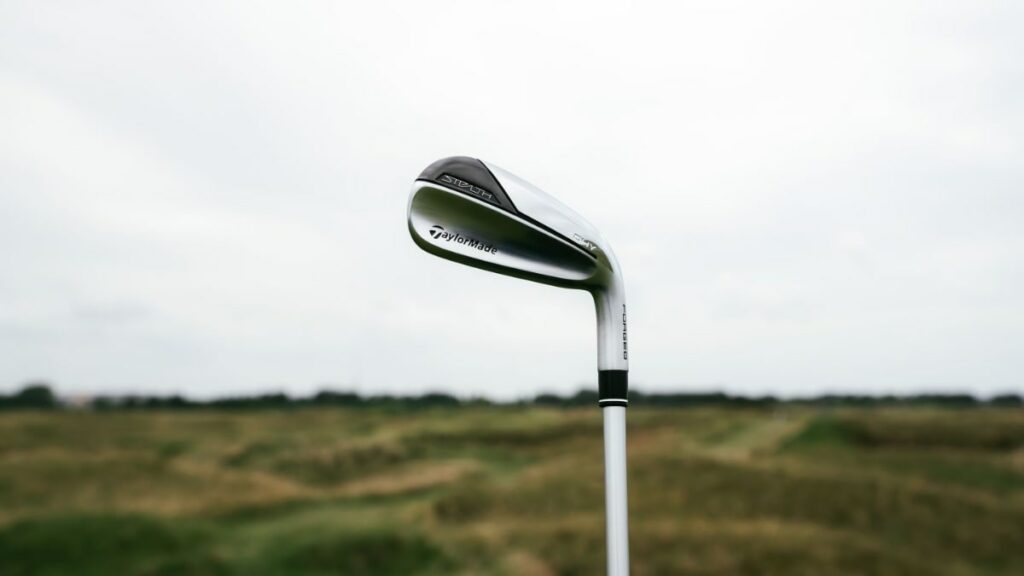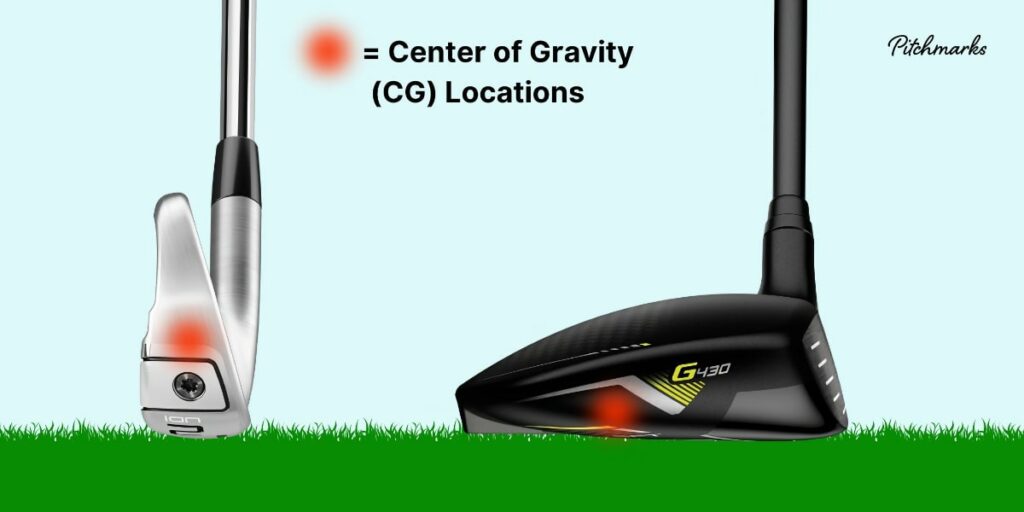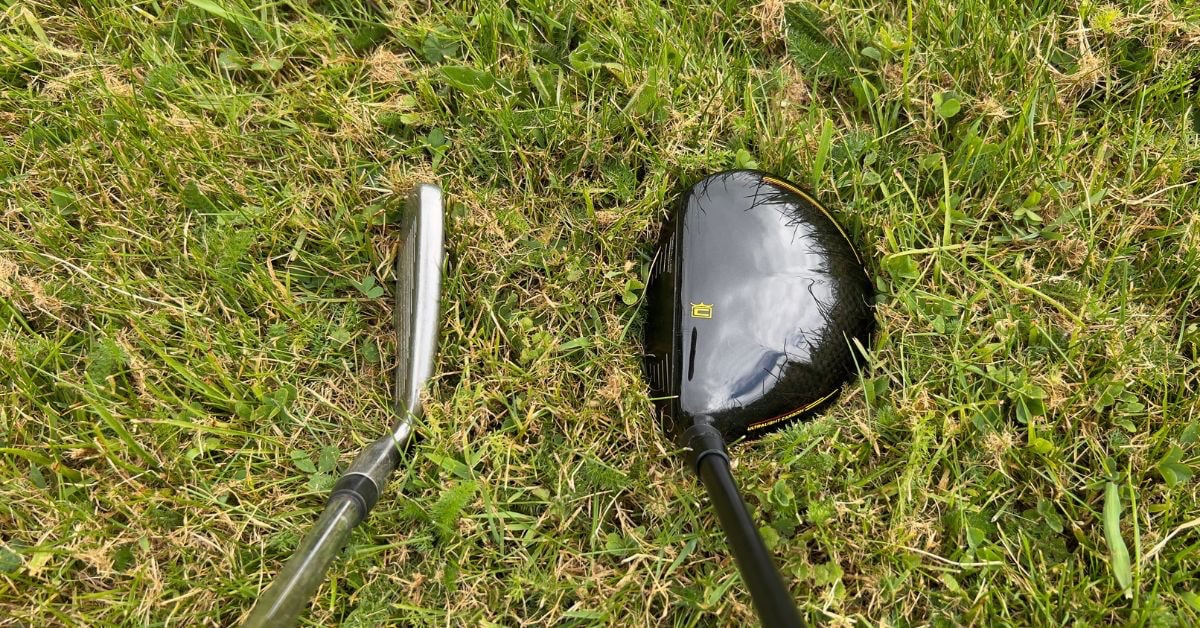Historically, long irons would feature towards the top end of most golf bags.
But in the modern game, many amateurs — and even pros — choose to sacrifice their long irons in place of more versatile and forgiving fairway woods and hybrids.
That said, should the 2 iron still hold a place in the average golfer’s bag?
In this article, I’ll compare the 2 iron vs 5 wood to help you decide which is best for your game — so you can make a confident purchase decision.
Ready? Let’s get into it!
2 Iron vs 5 Wood
Typically, 2 irons and 5 woods have the same loft angle of 18 degrees. So, the average distance for each club is similar — around 200 yards. But, due to the larger head size and lower CG, the 5 wood will be more forgiving and provide a higher launch angle.
Some golfers would much rather play an iron than a wood if there is a choice. However, it depends on a number of factors such as swing speed and course conditions.
Having said that, I do not fancy hitting a 1 iron and don’t carry one in my bag. As Lee Trevino famously said, “Not even God can hit a 1-iron”.
Later in this article, I’ll cover each of the factors to consider when making the choice.
First, let’s dive into the specifications of the 2 iron vs 5 wood.
2 Iron vs 5 Wood: The Specs

In the table below, I’ve collected data from leading manufacturers (TaylorMade, Cobra, Callaway, and Ping) to analyze the latest 2 iron vs 5 wood specifications:
| 2 Iron | 5 Wood | |
| Loft Angle | 18º | 18º |
| Shaft Length | 39.5″ to 40.5″ | 42.25″ to 42.75″ |
| Carry Distance | 180 to 220 yards | 180 to 220 yards |
Loft Angle
The loft angle is 18º for both a 2 iron and a 5 wood.
So, you should expect the ball to launch and travel the same distance — right?
Not quite! This is where the center of gravity and launch angle comes into play…
Launch Angle
With a 2 iron, the clubface is tall from top to bottom. The center of gravity is relatively high on the face, so the ball is likely to come off the face at a lower trajectory.
On the other hand, the 5 wood has a much shorter clubface. The center of gravity is significantly lower, which means the ball will launch at a higher trajectory.

So what does this mean for performance?
Essentially, it’s much easier to get the ball airborne with a 5 wood than with a 2 iron.
Despite having identical loft angles, you will achieve a higher launch angle with a 5 wood than a 2 iron due to the lower CG forcing the ball upwards at impact.
Shaft Length
On average, the length of a 2 iron is 40 inches vs 42.5 inches for a 5 wood.
Some golfers prefer to swing shorter clubs. Often, it can feel more comfortable standing closer to the ball in order to locate the center of the clubface on a consistent basis.
However, the 5 wood’s large head counteracts the challenge of using a longer shaft.
Distance
Generally, both clubs can achieve distances anywhere from around 180 yards up to 300+ yards (if you’re Min Woo Lee).
Particularly with the 2 iron, distance depends largely on the quality of the strike.
With a poor strike, you’d be lucky to get 50 yards out of the club. That’s where the forgiveness of the 5 wood outperforms the 2 iron — for the everyday golfer.
In the video below, TXG puts the fairway wood and long iron to the test:
How to Choose the Right Club For Your Game
So, we’ve covered the main specifications and how they relate to the performance of each club. But how can you decide which is the right club for your game?
Ultimately, choosing between a 2 iron vs 5 wood depends on two main factors:
- Swing Speed & Skill Level
- Versatility & Course Conditions
Let’s dive into each of these factors to see how they relate to your game.
Swing Speed & Skill Level

In general, a 2 iron requires swing speeds measuring around 90 to 105 miles per hour (145 to 170 kph) for the best results in launch and control.
As we covered earlier, the center of gravity is relatively high on the 2 iron.
The high center of gravity paired with a small sweet spot means the 2 iron is one of the most challenging clubs to hit consistently well.
To offset the high CG and low loft, you need to have a pretty high swing speed and accurate ball-striking ability to achieve that consistently good strike.
On the other hand, the ideal swing speed for a 5 wood varies between 80 to 95 miles per hour (130 to 150 kph) to generate optimal launch and distance.
The lower CG and larger, more forgiving club head mean that it’s easier to get the ball airborne with a 5 wood — when compared to a 2 iron.
Summary: Players with high swing speeds can opt for either a 2 iron or a 5 wood, but those with slow-medium swing speeds should choose a 5 wood to help get the ball airborne.Versatility & Course Conditions

Often, the 2 iron is preferred by skilled golfers with high swing speeds as it can offer lots of control and workability on the golf course.
Put simply, it’s easier to shape the ball left or right with irons than fairway woods.
So, if you find yourself wanting to draw or fade the ball around obstacles — or following the direction of a dogleg off the tee — then a 2 iron might be worth testing out.
PRO TIP: The 2 iron is a particularly great option when playing in windy conditions, as it keeps the ball flight below the wind.
However, the 2 iron is generally only useful off the tee or a tight fairway lie. Out of the rough, the small club head and low loft make it difficult to cut through the grass.
Conversely, the 5 wood works great off the tee and fairway, while also being a solid option out of the rough. However, it can be harder to work the ball left and right.
The wide sole and large, forgiving club head on the 5 wood allows it to punch through the longer grass effectively — whereas long irons tend to get snagged up.
For the everyday golfer, I’d give them a 5 wood over a 2 iron in almost every scenario.
Summary: The 2 iron is a good option off the tee or fairway if you have the skill to work the ball left and right. However, the 5 wood is more forgiving despite lacking some workability.
Final Thoughts
Overall, the decision comes down to your personal preference.
If you’re more comfortable with an iron swing — particularly swinging a shorter club with the ability to shape shots — then a 2 iron could be a good pick for you.
In addition, if you tend to play in windy conditions where it’s vital to play punch shots to keep the ball below the wind, the 2 irons can be a great low-launch option off the tee.
However, it’s important to be aware that 2 irons notoriously have a very small sweet spot and lack the forgiveness of a fairway wood or a hybrid.
If you have a lower swing speed and need a high-launching club — or are looking for more forgiveness from off-center hits — then I’d add a 5 wood to your bag.
It’s highly versatile and can be used off the tee, on the fairway, or out of the rough.
Also, it will generate plenty of height, which can be useful when stopping the ball on the green from longer approach shots which could be prone to running off the back.
Ultimately, I highly recommend you go to your local golf shop to test out both clubs.
That way, you can feel confident about making the right choice for your game.


